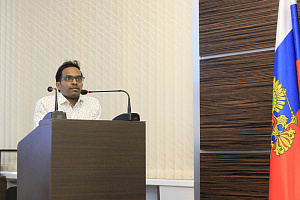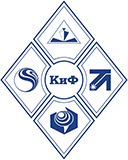
09.09.2019
В Институте кристаллографии им. А.В. Шубникова ФНИЦ «Кристаллография и фотоника» РАН состоялся Объединённый научный семинар. Д-р Кришна Бхарат Ланкамсетти – научный сотрудник Центра биомедицинской инженерии, Института Молекулярной Медицины Сеченовского университета (Москва), выступил с докладом на тему «A Study on Complex Oxide Materials for Optical, Energy Harvesting, and Biomedical Applications».
Аннотация доклада (на англ. языке).
Nowadays, the science and technology is growing rapidly and by developing novel materials and advanced manufacturing techniques for the production of efficient and low-cost devices. One among them is the solid-state lighting industry, which is flourishing with the production of efficient light-emitting diodes (LEDs) which can replace the conventional light sources. Especially, oxide-based materials activated with rare-earth elements are used for obtaining white LEDs (WLEDs) which are eco-friendly, highly stable with good physical and chemical properties. Now, a striving challenge for researchers is to synthesize novel rare-earth free materials with good stability and efficiency for cost-effective outdoor and indoor illumination applications. Likewise, researchers intended to use this novel structured rare-earth free nanomaterials with almost uniform size, shape and good optical properties for their application in enhanced detection of latent fingerprints.
Similarly these oxide based materials are used for scavenging the energy from renewable energy resources like solar, thermal, wind, ocean wave, and mechanical energies. It is one of the great research interest to fulfill the global energy requirements, which is the best alternative for conventional power supplies. Among these several energy resources, researchers are showing a keen interest to harvest the mechanical energies available in our daily lives such as human motion, mechanical triggering, rotation, etc.
Furthermore, these kind of materials were also being used in biomedical applications. Photodynamic therapy (PDT) is an emerging, non-invasive therapeutic strategy that involves photosensitizer (PS) drugs and external light for the treatment of diseases. Despite the great progress in PS-mediated PDT, their clinical applications are still hampered by poor water solubility and tissue/cell specificity of conventional PS drugs. Therefore, great efforts have been made towards the development of nanomaterials that can tackle fundamental challenges in conventional PS drug-mediated PDT for cancer treatment.

